How Much Does a Deadlift Bar Weigh? (Different Types)
Author:
Reviewed by:
(21 years of Oly Lifting experience)
Unlock your full potential by engaging with our experts and community! Have questions about your fitness journey or looking for expert advice on weightlifting techniques? Don’t hesitate — leave a comment below and Sergii Putsov will provide a personalized answer and insights to help you reach your goals.
Torokhtiy is reader-supported. Some links are affiliate links, and we may earn a commission at no extra cost to you. See our disclosure page for details.
Strength training has become an important component of fitness programs throughout the world, and learning the discipline of deadlifting is critical for anyone aiming to grow muscle and boost total body strength. The deadlift bar weight, which fluctuates based on the individual’s degree of expertise and desired objectives, is at the heart of this popular exercise. The Olympic deadlift bar weight is commonly regarded as the gold standard for both serious athletes and fitness enthusiasts.
This article will discuss the significance of selecting the proper deadlift bar weight for your strength training goals, as well as the elements that impact this decision and the benefits of utilizing the optimum weight for best performance.
A deadlift bar weight refers to the weight of the barbell itself, typically ranging from 15 to 20 kg (33 to 44 lbs) for standard, women’s, and specialty deadlift bars. The weight of the barbell, combined with added weight plates, determines the total weight lifted during the deadlift exercise.
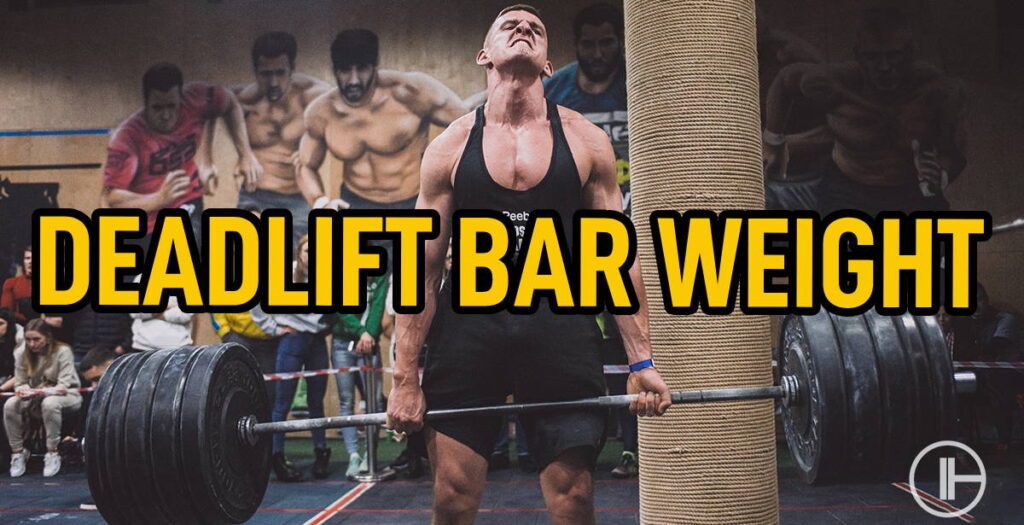
What Is a Deadlift Bar?
The deadlift bar, a piece of specialist equipment developed exclusively for deadlifts, has become an essential aspect of strength training for athletes and fitness enthusiasts alike. With its distinct characteristics designed to enhance performance in this specific exercise, it is critical to comprehend the distinctions between a deadlift bar and a conventional bar, as well as why the weight of the deadlift bar matters in accomplishing your fitness objectives.
A deadlift bar may look identical to a regular Olympic barbell at first sight; yet, upon closer investigation, numerous major variances become apparent. The greater length of the deadlift bar, which normally measures roughly 7.5 to 8 feet compared to the regular 7-foot Olympic barbell, is one of the most noticeable differences. This extra length allows for greater grasping space and better body placement throughout the lift. Additionally, the deadlift bar has a smaller diameter, which provides a more comfortable grip and allows the lifter to retain better control during the exercise. A deadlift bar’s knurling is also more aggressive, guaranteeing a firm grip and preventing the bar from sliding during the lift.
Another notable distinction between a standard bar and a deadlift bar is the bar’s flex or “whip.” Deadlift bars are specially designed to have more flex, allowing the weights to progressively lift off the ground as the lifter pulls on the bar. Certain lifters may benefit from greater flex since it allows them to create more force and lift larger weights. However, it’s important to remember that the extra flex may not be ideal for all lifters, and some may prefer the rigidity of a normal Olympic barbell.
For numerous reasons, the weight of a deadlift bar is critical in strength training. To begin, utilizing the right deadlift bar weight can assist prevent injuries by allowing perfect form and technique throughout the lift. Working with the proper weight can also result in more effective muscle activation and, eventually, higher strength increases. A well-chosen deadlift bar weight will push the lifter without creating unnecessary strain or sacrificing form, encouraging steady improvement and long-term strength training success.
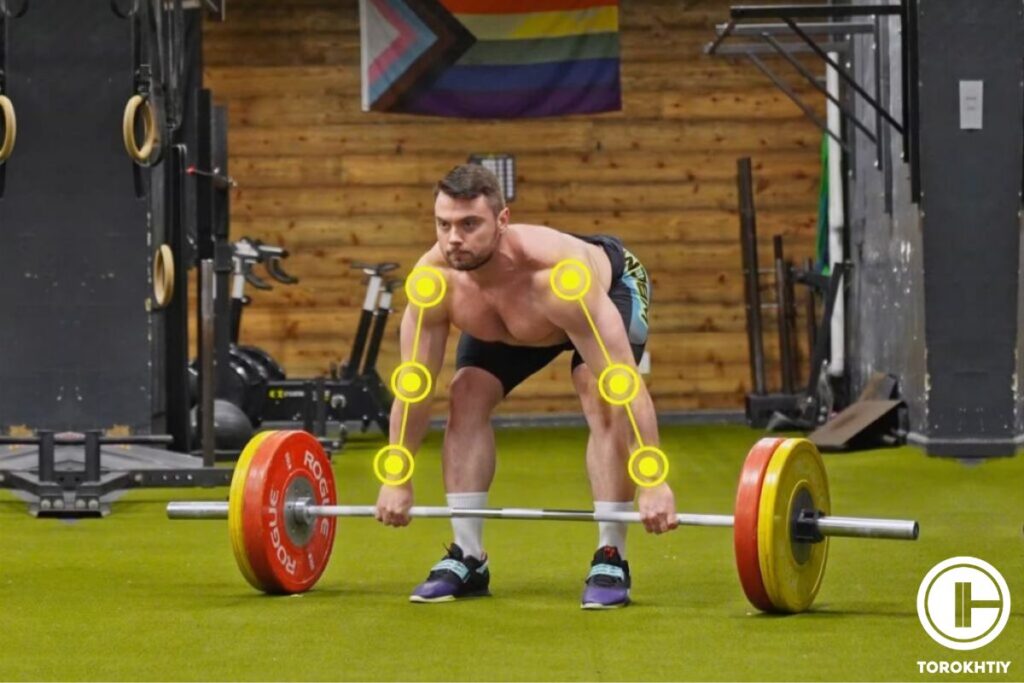
How Much Does a Deadlift Bar Weigh?
Asking yourself: “How much weight is a deadlift bar?” A deadlift bar is normally 44 pounds or 20 kilograms in weight, which is the same as a universal Olympic weightlifting barbell. Specialty bars, on the other hand, can range in weight from 20 to 70 pounds or more. It’s vital to remember that not all deadlift bars are created equal, and their weight might vary based on the type of bar.
Weight of Different Bars Used for Deadlifts
Standard Deadlift Bar
The standard deadlift bar is particularly intended to improve deadlift performance, which is an important strength training exercise. It is normally 7.5 to 8 feet long, which provides greater area for gripping and body placement than a standard Olympic barbell. Its weight of around 20 kg (44 lbs) makes it a suitable starting point for a wide range of lifters, from beginners to elite athletes.
The normal deadlift bar has a smaller diameter, which allows for a more comfortable grip and greater control during lifts. The bar’s strong knurling also ensures a firm grip, avoiding slippage during the workout. Additionally, the typical deadlift bar has a significant degree of flex or “whip,” which might help certain lifters generate greater power and lift bigger weights.
Texas Deadlift Bar
The Texas Deadlift Bar is well-known among powerlifters and strength athletes for its high quality and performance-enhancing qualities. How much does a texas deadlift bar weigh? This bar weighs roughly 20.4 kg (45 lbs), and it is designed to meet the demands of serious lifters. The extended length of about 7.5 to 8 feet allows for enough grasping and good body alignment during deadlifts.
The Texas Deadlift Bar has a relatively small diameter, usually approximately 27 mm, which enables a comfortable and solid grasp for lifters. The strong knurling on this bar improves grip stability even further, lowering the chance of slippage during large lifts. One of the primary features that distinguishes the Texas Deadlift Bar from other bars is its greater flex or “whip,” which allows the weights to progressively lift off the ground and allows lifters to produce more power to lift bigger loads.
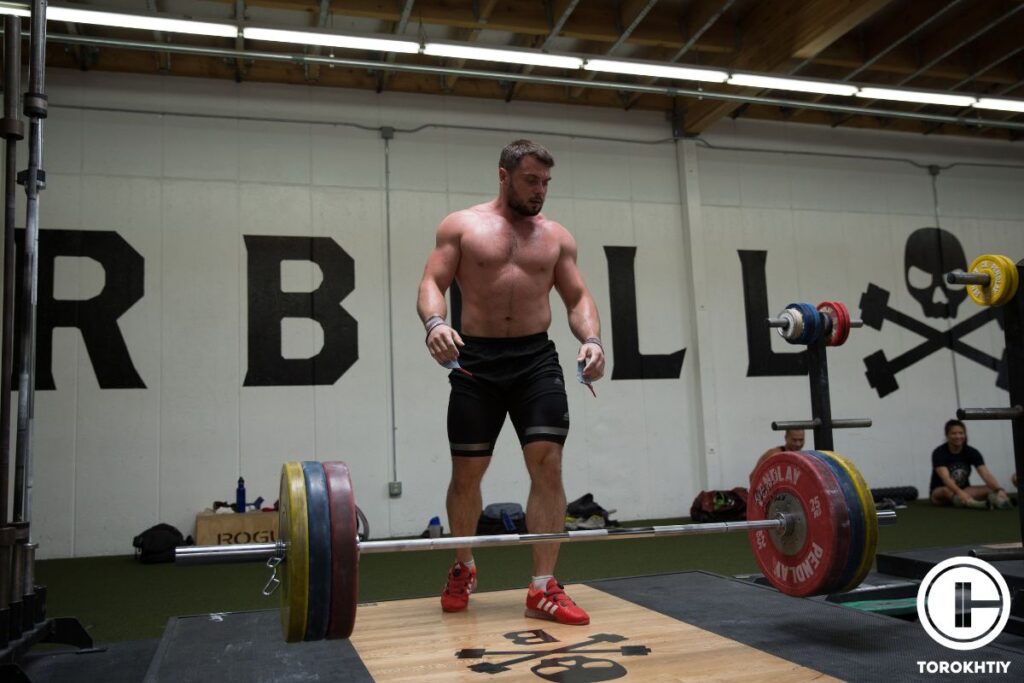
Ohio Deadlift Bar
The Ohio Deadlift Bar, created by Rogue Fitness, is a popular choice among powerlifters. It caters to a wide spectrum of lifters, from beginners to experienced athletes, with a weight of roughly 20 kg (44 lbs). The increased length of the bar, which measures around 7.5 to 8 feet, enables for easy gripping and optimal body alignment during deadlifts.
A 27 mm diameter, which provides a safe and comfortable grip for lifters, is one of the Ohio Deadlift Bar’s distinguishing qualities. The strong knurling adds to grip stability by reducing the danger of slippage during intensive lifting sessions. The Ohio Deadlift Bar is also well-known for its moderate flex or “whip,” which can be advantageous for some athletes in generating more force and carrying heavier weights.
Okie Deadlift Bar
Because of its tremendous whip and flexibility, the Okie Deadlift Bar is a specialist piece of equipment preferred by expert lifters. It accommodates a wide variety of athletes, from intermediate to advanced, and weighs roughly 20 kg (44 lbs). The bar is approximately 7.5 to 8 feet long, allowing for a comfortable grip and optimal body alignment during deadlifts.
The Okie Deadlift Bar is designed to provide a secure and pleasant grasp for its users by virtue of its smaller diameter (often around 27 mm). Extra knurling on this bar makes it easier to have a firm hold, which is especially helpful when lifting heavy weights. Because of its exceptional flex or “whip,” the Okie Deadlift Bar helps lifters progressively raise heavier loads from the ground, allowing them to build up more force and control heavier weights.
Trap Bar (Hex Bar)
The Trap Bar, also known as the Hex Bar, is an alternative to the conventional deadlift bar with its innovative design. The trap bar’s unique hexagonal form allows the lifter to stand inside it, which in turn encourages a more neutral grip and relieves pressure on the lower back. The weight of deadlift hex bar is between 20 and 30 kilograms (44 and 66 pounds), making them suitable for a wide variety of athletes.
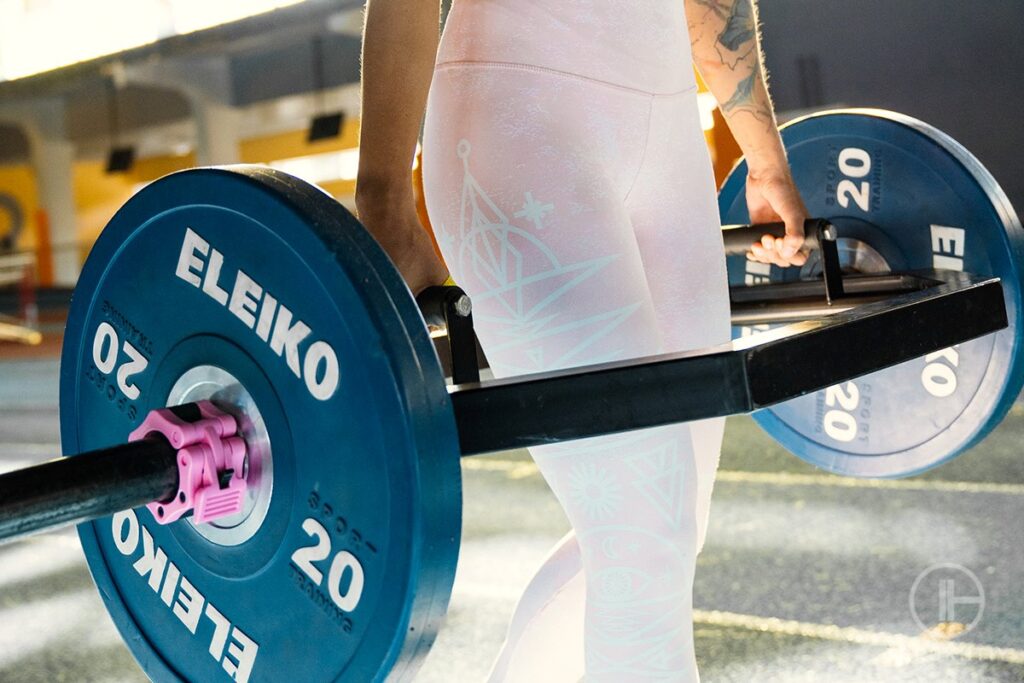
One set of handles is at a more conventional height, while the other set is elevated, offering users a choice in which is more comfortable for them. With the hex deadlift bar weight, you may deadlift with a more upright stance, putting more emphasis on your leg and hip drive. Those with mobility limitations or weightlifters trying to isolate certain muscle areas will find it to be an excellent option.
Women’s Deadlift Bar
The Women’s Deadlift Bar was created to meet the special demands and preferences of female lifters. It offers a more accessible version for women, fitting smaller hands and narrower shoulder widths for a comfortable lifting experience, with a weight of roughly 15 kg (33 lbs) and a shorter length, generally around 6.5 feet.
The Women’s Deadlift Bar has a smaller diameter, often approximately 25 mm, which guarantees a more stable and comfortable grip for female athletes. The knurling on the bar is designed to give appropriate grip stability without being too aggressive, lowering the chance of slippage during lifts. The Women’s Deadlift Bar, like other deadlift bars, has a mild flex or “whip,” allowing lifters to create enough power and efficiently lift greater weights.
Sumo Deadlift Bar
The Sumo Deadlift Bar is designed specifically for deadlifters who favor the sumo stance. With a weight of approximately 20 kilograms (44 pounds) and a length spanning from 7.5 to 8 feet, it is suitable for a wide spectrum of athletes, from novices to experts.
The Sumo Deadlift Bar has a broader distance between the knurling marks, which facilitates the sumo posture and allows for enhanced grip placement and lifting mechanics. The diameter of the bar is typically around 27 mm, providing lifters with a comfortable and secure grasp. The Sumo Deadlift Bar, like other deadlift bars, features a moderate flex or “whip” that enables lifters to generate more muscle force and effectively lift heavier weight
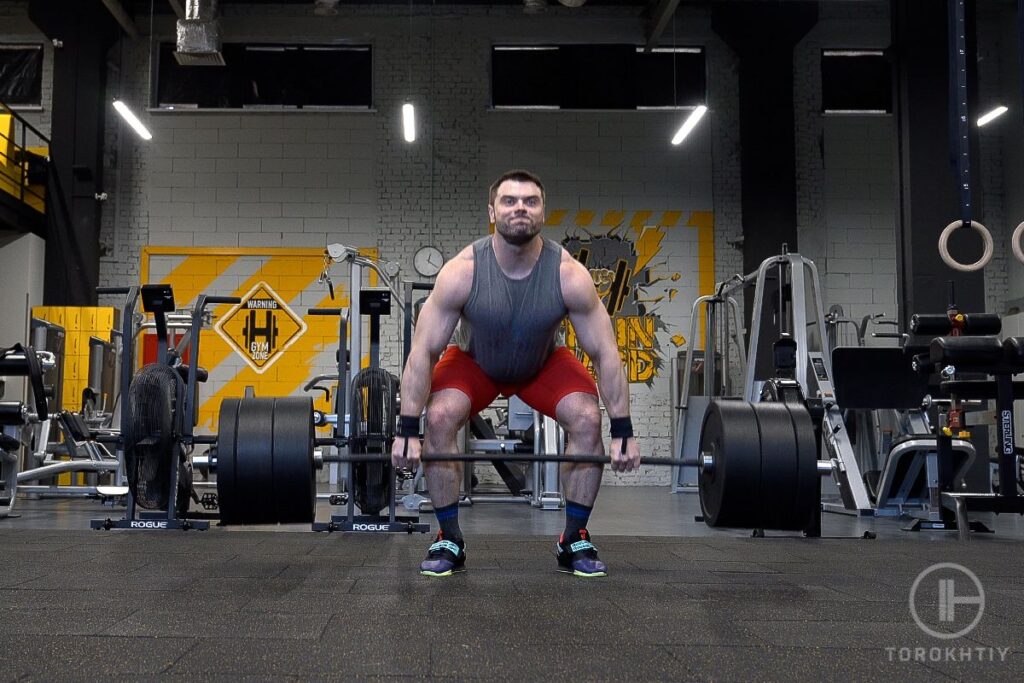
Deadlift Bar Weight Comparison
Back-focused deadlift variations include snatch grip deadlifts and stiff leg deadlifts. Snatch grip deadlifts are where you use a wide barbell grip, which puts you in more of a bent-over starting position. This places more stress on your lower back muscles.
So, do stiff leg deadlifts work your lower back? They involve less knee flexion, with the higher hip position and parallel back placing more stress on your glutes, hamstrings, and lower back.
| Deadlift Bar | Weight | Length | Type | Type of Sport | Suitable For |
| Standard Deadlift Bar | 20 kg (44 lbs) | 7.5 – 8 feet | General-purpose | Strength training | Men, Women |
| Texas Deadlift Bar | 20.4 kg (45 lbs) | 7.5 – 8 feet | Powerlifting | Strength training | Men, Women |
| Ohio Deadlift Bar | 20 kg (44 lbs) | 7.5 – 8 feet | Powerlifting | Strength training | Men, Women |
| Okie Deadlift Bar | 20 kg (44 lbs) | 7.5 – 8 feet | Powerlifting | Strength training | Men, Women |
| Trap Bar (Hex Bar) | 20 – 30 kg (44 – 66 lbs) | Variable | General-purpose | Strength training | Men, Women, Children |
| Women’s Deadlift Bar | 15 kg (33 lbs) | ~6.5 feet | General-purpose | Strength training | Women |
| Sumo Deadlift Bar | 20 kg (44 lbs) | 7.5 – 8 feet | Powerlifting | Strength training | Men, Women |
How To Check Your Deadlift Bar Weight
Deadlift bars often have their weights imprinted on the business end of the shaft for easy reference. Use a deadlift bar weight calculator by inputting the weight of your unloaded deadlift bar and choosing the weight of your plates if the weight is not given. Since deadlift bars can range in weight from 20 to 70+ pounds, knowing how much yours weighs might be helpful.
Deadlift Bars Weight vs Normal and Olympic Bars
When compared to stiff bars, deadlift bars are longer, thinner, have lower tensile strength, and bend more under larger weights. Olympic bars are typically shorter than deadlift bars, but they have longer sleeves. Because deadlift bars have more whip, they can bend more before the weight comes off the floor. An Olympic barbell is 45 pounds and is straight across. Standard straight barbells are 5 to 6 feet long, weigh 15 to 25 pounds, and bend quite a bit when lifted with large weights. A deadlift bar is a sort of powerlifting bar, however it has a narrower diameter than a typical power bar.
FAQ
Are There Different Length Deadlift Bars?
Yes, multiple length deadlift bars are available to meet varied tastes and lifting methods. The standard deadlift bar is around 7.5 to 8 feet long, but the Women’s Deadlift Bar is approximately 6.5 feet long. Trap Bars (Hex Bars) can vary in length depending on the manufacturer. The length of your deadlift bar should be determined by your own demands, such as grip breadth, lifting style, and workout comfort.
Can You Deadlift With a Fixed Weight Barbell?
You can deadlift with a fixed weight barbell, but there may be some limits. Fixed weight barbells are often shorter in length and have fewer room for grip modifications, which might have an impact on lifting technique. Furthermore, they do not provide the same adaptability in terms of raising or lowering weight as adjustable barbells. Despite these disadvantages, fixed weight barbells can be a good starting point for novices or for doing smaller deadlift variants as part of a full strength training program.
How Heavy Is a Deadlift Bar?
A deadlift bar is normally 45 lbs or 20 kg in weight, which is the same as a universal Olympic weightlifting barbell.
Conclusion
Understanding deadlift bar weight is essential for strength training since it influences lifting mechanics, comfort, and overall performance. With so many different types of deadlift bars available, each intended to meet certain requirements and tastes, choosing the proper bar for your goals is critical.
Whether you’re a novice or a seasoned lifter, selecting the right deadlift bar weight and length can help you maximize your training and obtain better results. We’d love to know what you think about it! Share your thoughts and experiences with deadlift bar weight and how it has influenced your strength training journey in the comments section below.
Also read:
- Deadlift Progress
- Deadlifting 405
- Does Deadlift Work Lower Back
- Eccentric Part of Deadlift
- Deadlift on Back or Leg Day
- Do Deadlifts Work Glutes
- What Muscles Are Used in Deadlift
- Sumo vs Conventional Deadlift
- Deadlift Program
References:
- Kinematic Differences Between the Front and Back Squat and Conventional and Sumo Deadlift // Journals: https://journals.lww.com/nsca-jscr/Fulltext/2019/12000/Kinematic_Differences_Between_the_Front_and_Back.2.aspx
- Conventional vs. Sumo vs. Hex Bar Deadlift: What’s the Difference? // BarbellRehab: https://barbellrehab.com/deadlift-variations
- 10 Deadlift Alternatives to Consider // Healthline: https://www.healthline.com/health/fitness-exercise/deadlift-alternative
- Genes and Athletic Performance: An Update // NCBI: https://pubmed.ncbi.nlm.nih.gov/27287076/
- Muscle fatigue: general understanding and treatment // NCBI: https://www.ncbi.nlm.nih.gov/pmc/articles/PMC5668469/
- PEffect of an Exercise Program That Includes Deadlifts on Low Back Pain // NCBI: https://pubmed.ncbi.nlm.nih.gov/33626500/
Why Trust Us?
With over 20 years in Olympic weightlifting, strength training, nutrition coaching, and general fitness our team does its best to provide the audience with ultimate support and meet the needs and requirements of advanced athletes and professional lifters, as well as people who strive to open new opportunities and develop their physical capabilities with us.
By trusting the recommendations of our certified experts in coaching, nutrition, and sports training programming, as well as scientific consultants, and physiotherapists, we provide you with thorough, well-considered, and scientifically proven content. All the information given in the articles concerning workout programming, separate exercises, and athletic performance, in general, is based on verified data.
The product testing process is described in more detail here.
Author: Sergii Putsov
Head of Sport Science, PhD
Best Results: Snatch – 165 kg,
C&J – 200 kg
Sergii Putsov, Ph.D., is a former professional weightlifter and National team member, achieving multiple medals in the 94 kg weight category at national competitions. With a Master’s degree in “Olympic & Professional Sport Training” and a Sport Science Ph.D. from the International Olympic Academy, Greece, Sergii now leads as the Head of Sport Science. He specializes in designing training programs, writing insightful blog articles, providing live commentary at international weightlifting events, and conducting educational seminars worldwide alongside Olympic weightlifting expert Oleksiy Torokhtiy.
Reviewed by: Oleksiy Torokhtiy
Olympic Weightlifting Champion, PhD in Sport Science
Best Results: Snatch – 200 kg,
C&J – 240 kg
Oleksiy Torokhtiy is a professional athlete boasting 20 years of experience in Olympic weightlifting. With multiple European and World titles under his belt, he has showcased his prowess in two Olympic Games (Beijing 2008 and London 2012). Upon concluding his illustrious career, Oleksiy dedicated himself to coaching. By 2022, he had conducted over 200 weightlifting seminars worldwide. He is the visionary behind an international sportswear and accessories brand known for its motto, “Warm Body Cold Mind.” Additionally, he is an esteemed author and the creator of a series of training programs and eBooks.




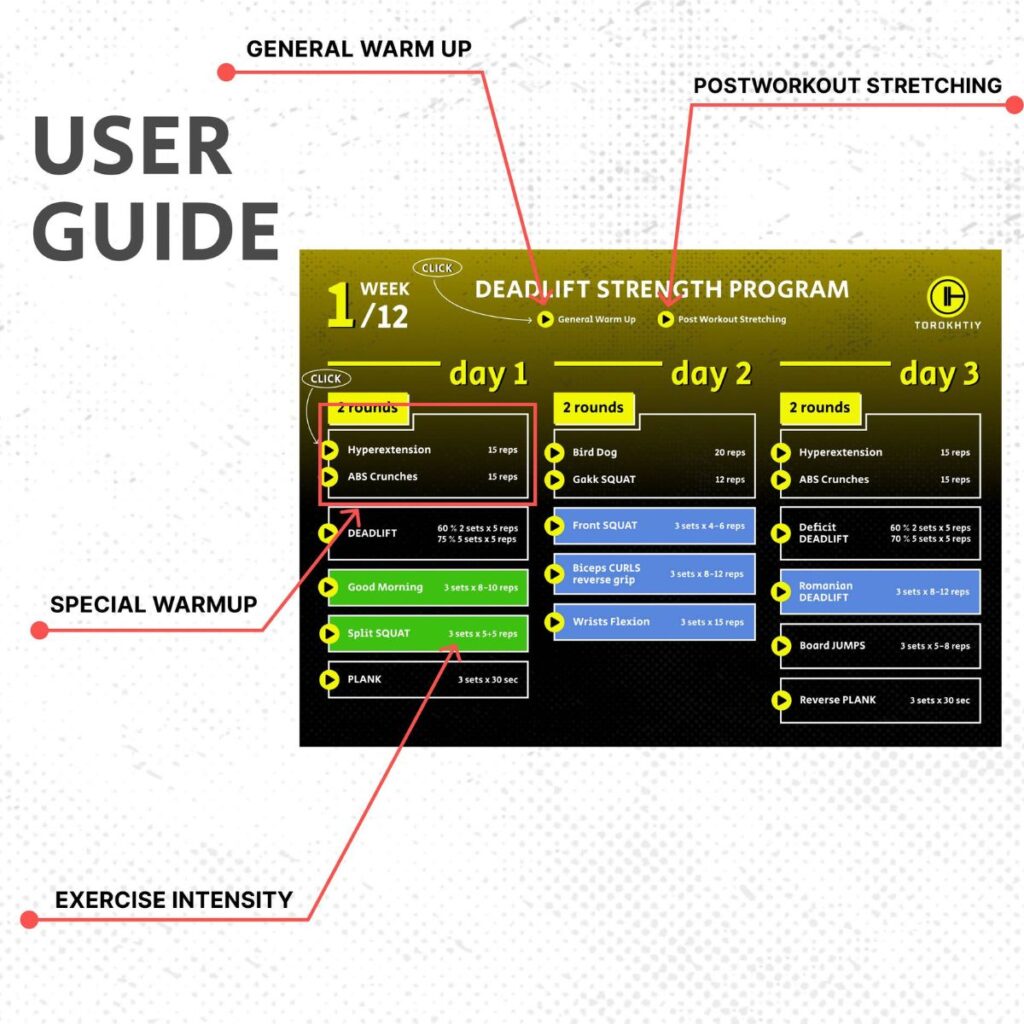
Still have questions after reading our article? Unlock your full potential by engaging with our experts and community! Don’t hesitate — leave a comment below and Sergii Putsov will provide a personalized answer and insights to help you reach your goals.